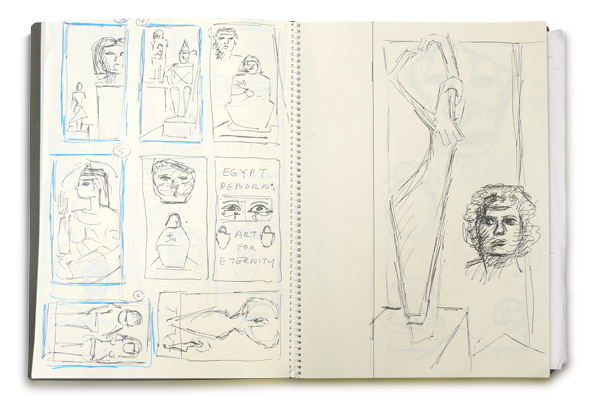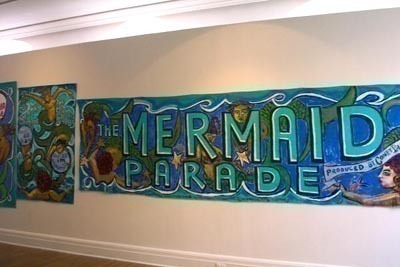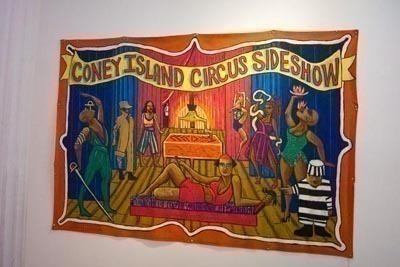Painter Marie Roberts Riffs on Egyptian Sculpture
From Winter to Summer 2008, the Museum’s longterm installation in the 3rd floor Beaux Arts court ambulatory, About Time: 700 Years of European Painting will be taken off view. The reason is that the glass block floor of the court will be renovated for the first time since Museum’s construction in the late 19th century. During this renovation period, at least 2 or the 4 ambulatory hallways surrounding the glass black floor will be closed on an as needed basis. Temporary barrier walls will be built to separate the floor renovation from public areas, and special signage is being created to guide visitors during this time.
This special signage is being hand-painted by Brooklyn artist Marie Roberts, who you may know from her work at Coney Island or one of her projects.

Over the past month, Marie has studied and sketched sculptures in the Museum’s adjacent exhibition, Egypt Reborn. From these drawings, Marie will vividly paint mural signs that when installed, will activate the ambulatory spaces and lead visitors to see the Museum’s internationally renowned collection of ancient and middle-eastern art.

Matthew Yokobosky came to the Brooklyn Museum as an exhibition designer in 1999, and was appointed Chief Designer in 2002. He earned a B.A. in film studies and design from the University of Pittsburgh in 1986, and, one year later, moved to New York to work at the Whitney Museum of American Art. While at the Whitney, Yokobosky held many positions, including exhibition designer (1995 Biennial, The American Century (1999)) and associate curator of film and video (No Wave Cinema, 1996; Fashion & Film, 1997). During the same period, he designed theater productions (Ping Chong's 1989 show Brightness, which won a Bessie award for set and costume design) and books (Yoko Ono: Arias and Objects, 1991). For the Brooklyn Museum, he has designed the critically acclaimed Luce Center for American Art (2002/2005, permanent installations), as well as over 30 temporary exhibitions including Hiroshige: 100 Famous Views of Edo (2000), Basquiat (2005), Annie Leibovitz (2006-7), and I Wanna Be Loved by You: Photographs of Marilyn Monroe (2004), which he also curated.


